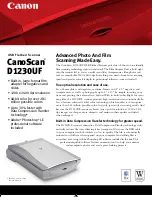
Since many channels are shared among many users, some may have switched over to NFM while others
have not, at least not yet. If listening to both NFM and FM users on the same scanner channel is not
working for you then you could use the CTCSS or DCS feature and program in a separate channel for each.
PL, DPL, CTCSS, DCS, NAC, etc.
Years ago radio manufactures hit on a great idea. Transmit a low level tone on a radio channel so that
radios equipped with a special decoder would only hear radios transmitting that tone. This way users would
not have to listen to all the rest of the users of the channel, either local or when “Skip” comes in. Eventually
dozens of different tones were developed by manufacturers and 38 of them were more or less standardized.
The various manufacturers had different trade names for this feature, Motorola’s “PL” (Private Line) was
the most used. It kind of became a generic name for the feature even though it was offered by GE,
Kenwood and many other vendors, much like Kleenex has become a generic name for facial tissue. Since
Motorola owns the trade name however, the scanner manufacturers call the feature by it’s technical name
of Continuous Tone Coded Signal Squelch, or more succinctly, CTCSS. These are expressed in Hz., with
one digit right of the decimal point, ranging from 67.0 to 254.1 Hz.
CTCSS served the industry well, and eventually scanner users wanted this feature on their scanners.
Eventually it became a standard feature on higher end scanners.
As the radio bands became more crowded the few dozen CTCSS tones became inadequate and a new
method of achieving the same results was developed. Motorola called it Digital PL (DPL) and the industry
name was called DCS for Digital Coded Squelch. These are continuous digital words transmitted in a
similar fashion to CTCSS. They are expressed in a three digit number, and there are about 100 codes in
common use. Some references express DCS codes as Dxxx (D023, D251 etc.) but the GRE only displays
the 3 numbers.
When P25 was introduced it was not compatible with CTCSS or DCS codes so a new format was devised,
called Network Access Codes (NAC). NAC’s work the same as CTCSS and DCS codes do, and newer
GRE digital scanners, such as the PSR600, can display or decode them. As mentioned earlier, a great thing
is that the PSR600 will display any one of these three codes (CTCSS, DCS or NAC) when the channel is
active during a Search Event.
What can you use CTCSS, DCS or NAC codes for? Well, pretty much the same reasons they are used in
the field. The most common use is to screen out unwanted radio traffic, either on repeaters or on simplex
(non-repeater) channels. Is the same fire frequency in your area also used in the next county? Figure out the
code used by your local agency and program it in to your scanner to exclude the other unwanted users of
the same frequency.
Some agencies also use multiple codes to separate traffic on multi-site repeater systems to avoid
interference and expensive steering equipment systems while only needing a single channel. On one system
in my area, there is one code used for operations and another used only to contact emergency services, so
the 9-1-1 Center does not need to listen to the day-to-day operations. You need help, you use the
emergency code. This allows a single channel to be used but keeps the 9-1-1 center from having to pick out
emergency requests from the routine communications.
How do I find these codes?
OK, you have convinced me to use a CTCSS, DCS or NAC code. How do I figure out what codes are used
in my area? Well, there are a couple ways. You can find them yourself by using the Tone Search feature on
your scanner, you could look them up on RadioReference or another source, or you could ask the users if
they could tell you. Chances are the third option would be laughed at by the local users, if they had any idea
what you were talking about so the first two options are more realistic.
To have the radio decode the code for you program the Squelch type to “Search”. Once you find the correct
tone change the type to CTCSS, DCS or P25 as appropriate and enter in the proper code.



































